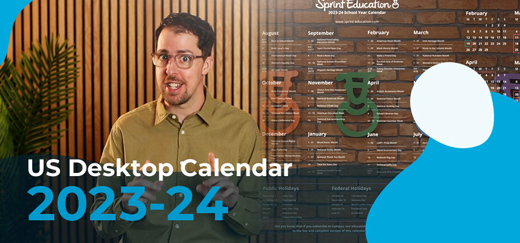School Funding Made Simple
School Funding Made Simple
What You Need to Know to Make More Sales This Year!
What You Need to Know to Make More Sales This Year!
Understanding how school funding works, how much money schools have to spend, and when and where they’re spending their money is the key to understanding when and where to target your marketing spend.
This quick guide will help you:
- Time your marketing emails to coincide with when budgets are released.
- Identify your audience and target the right education contacts.
- Understand school funding and what schools are working with.
School funding – the basics
Between 2020 and 2021, the UK spent approximately £96 billion on education overall, up from £92.3 billion the previous year.
Core school funding is set to increase over the next couple of years as part of the government’s commitment to introduce ‘the largest cash increase for schools in a decade’.
All state-funded schools, whether they’re academies or council-run schools, get two main streams of money from the government:
Core funding or revenue funding The money that is spent on running costs, such as salaries and teaching resources.
Capital funding The money spent on fixed assets, such as buildings, maintenance and equipment.
Types of additional school funding:
- Pupil premium grants are for raising attainment and are based on the number of disadvantaged pupils at a school.
- The PE and sport premium provides ring-fenced money to Primary School Head Teachers to improve the quality of the PE and sports activities they offer their pupils.
- Services premium provides schools with £310 for every pupil with a parent or carer who is serving in the armed forces for pastoral support.
- The Condition Improvement Fund is a budget to help academic buildings remain in a good condition. Each year, eligible schools can bid for capital funding.
How is funding allocated?
The National Funding Formula (NFF) is the method the government uses to decide how per-pupil funding should be allocated to each school in England. It was introduced to ensure all schools are funded on a single, fair, and consistent basis.
A wide range of factors are taken into account when calculating school budgets, everything from sparsity (additional funding for schools that are both small and remote) to split sites (additional funding for schools that incur additional expenditure due to operating two or more sites).
However, each school receives a minimum funding guarantee to protect them against significant changes in per-pupil funding.
The average per-pupil spend at the moment is £4,679 in primary schools and £5,992 in secondary schools.
In October 2021, it was announced that per-pupil funding would go up by an average of £1,500 by 2024-24 in comparison to 2019-20 levels.
While this will be welcome news, it’s worth noting that in November 2021, The IFS released their conclusions from an annual report on education spending, funded by the Nuffield Foundation.
“Last month’s Spending Review included an extra £4.4 billion for the schools budget in 2024 as compared with previous plans. When combined with existing plans, we project that spending per pupil in 2024 will be at about the same level as in 2010. Whilst this reverses past cuts, it will also mean 15 years with no overall growth in spending. This squeeze on school resources is effectively without precedent in post-war UK history.”
Other income sources:
Creating additional sources of income is becoming increasingly common for schools.
Facilities Renting out facilities out of school hours, such as sports facilities, halls for community group use, and even the whole school for summer holiday provision, is on the rise.
Catering Schools that prioritise making their own food and have suitable facilities are often able to create additional income from this.
Fundraising/Donations Schools are entitled to ask for financial support through voluntary donations or by fundraising activities often organised by PTAs (parent-teacher association).
Voluntary contributions Schools have always been allowed to ask parents for voluntary contributions towards certain ‘optional extras’, such as school trips. Legally, local authorities and governing bodies of state-maintained schools and academies cannot charge for education that takes place in school hours.
However, in recent years, schools have increasingly asked for voluntary contributions towards essential running costs as schools struggled with austerity budgets.
While recent government press releases regularly make welcome reading, with promises of levelling-up and record spending on education, it’s always worth reading beyond the headlines to gauge the mood of teachers and education staff.
Contacting schools about the record funding they have available might not always land well with education audiences who commonly report that they are expected to do more and more with budgets that are not rising fast enough in real cash terms.
When do schools plan their budgets and make purchases?
Maintained schools run their budgets in line with the local authority financial year of April to March. In contrast, Academies run them in line with the school year, from September to August.
Most schools will begin forecasting next year’s budget between January and March while reviewing their current budget to identify any areas for improvement or any underspend.
At the end of the financial year, local authorities can claw back unspent funds. Schools will, therefore, be keen to use up any surplus budget before the end of the financial year to avoid losing it. Academies, on the other hand, are allowed to retain unspent funds as optional reserves.
Schools generally plan their budgets with their school improvement plan (SIP) in mind. This is to ensure that they are planning for the future, and that all resources purchased are sustainable and are in line with the long-term goal of improving the educational outcomes of students.
Schools are encouraged to benchmark when procuring resources. The DfE launched a benchmarking system in 2018 to help schools easily see what neighbouring schools spend on resources, and connect with other schools to purchase resources or services together.
At the end of 2021, we conducted our most in-depth education survey ever, capturing insights from over 3,210 teachers and school staff to ask some key questions about school spending decisions.
We first asked schools when they make their “bigger” purchasing decisions. Smaller purchases needed throughout the year, such as textbooks or stationery, will be a more ad-hoc process. Larger purchases will require longer lead times to account for the decision-making process, plus, for some schools, approval by their MAT or local authority.
A considerable chunk of school staff (41%) voted they didn’t know – suggesting that such decisions are left to a few specific members of staff, such as the SMT or Year Heads, and admin staff or classroom teachers have far less involvement. The majority of our overall survey responses came from teaching staff. 19% were Senior Leaders.
However, 17.7% of respondents said that big purchasing decisions were generally made at the start of the new school year in September. Followed closely behind are the summer months, barring the summer holidays in August.
Of course, that’s not to say the summer is the only time you should email schools. March and April also prove to be common answers, although do bear in mind where the Easter holidays fall each year to make sure you’re emailing schools at the best possible time. For lots of schools, the Easter holidays are a great time to start large-scale projects such as facility work to keep disruption to a minimum, so make sure you’re taking advantage of the spring purchasing decisions as well as those in the summer.
Who are the key spending decision-makers?
Throughout the year, key members of staff, including CEOs, Senior Head Teachers and Deputy Head Teachers, Business Managers and Bursars, and Department and Subject Leaders will work together with the school’s Governors to make decisions about developments and budget allocation.
The benchmarking process, mentioned above, is designed to help staff quickly form a business case to put forward to Governors or the Senior Leaders for any proposed changes that they believe will improve student outcomes.
CEO A CEO is the strategic lead of a Multi-Academy Trust, supervising all Head Teachers working within the trust. They take full responsibility for all non-education outcomes, specifically the academies’ finances and budgets, and the operational growth of the trust.
Head Teacher / Principal The most senior teacher and leader of the school, the Head Teacher is responsible for pupils’ education, staff management, and policy making. They will typically work with governing bodies to communicate school values; support the Bursar in controlling school finances in line with funding regulations; and set, track, and monitor individual and whole-school targets and performance.
Bursar / Business Manager Reporting directly to the Head Teacher and potentially communicating with local authorities and school governors, the Bursar is in charge of the school’s financial administration. The Bursar manages the school budget and is responsible for the procurement and payment of products and services. They may perform additional duties, including recruitment, marketing, and holding managerial responsibility of other administrative staff.
Governor Governors are voluntary members of the community who want to contribute to the school’s strategic direction. Through setting aims, objectives, policies, and targets, they typically ensure that the school’s budget is well-spent, and challenge and support the Head Teacher’s delivery of academic outcomes.
Trustee Governors within an academy trust are known as trustees, as opposed to Governors who belong to faith schools or schools run by the Local Authority. Trustees perform the same actions as Governors, although work more closely with the trust’s CEO and answer to the trust’s members.
For our full Who’s Who Guide to UK School Staff, click here.
While it’s the Senior Leaders listed above that may have the final say on spending decisions, it’s often the teaching staff who will be using utilising your solution that will be driving the conversation and lobbying for the decision to be made.
So before you start removing class teachers from your sending lists, remember that they can be your biggest advocate. Win them over first. It might take a little longer, but it’ll put you in a better position to secure a sale when it comes to the crunch.
What next?
With the new financial year on the horizon, it’s time to put these insights to good use!
Of course, if you’re not sure where to start and would like some advice, drop us a line.
We can manage every aspect of your next email campaign with our managed strategies plan, share our secrets about combining email and social media to great effect, and let you know all about how we’ve revolutionised edu-marketing with Campus – our complete selling-to-schools solution.
Get in touch at info@sprint-education.co.uk or 01684 297373.
Tags
Education Budget
Education Data
Education Marketing
Similar Articles


7 Methods to Influence Schools' Purchasing Decisions
Gain the insights you need to target the right decision-makers in schools and increase your sales.


A Who’s Who Guide to MAT Staff
Target your schools marketing with our breakdown of the roles and responsibilities of every MAT decision-maker and influencer in the UK.


Expert marketing to K-12 support and solutions
Expert marketing to K-12 solutions
Email Principals, Teachers, and District Staff Inboxes
Email teachers and staff inboxes
Sell More to US and Global Schools and Districts
Sell more to schools and districts
































